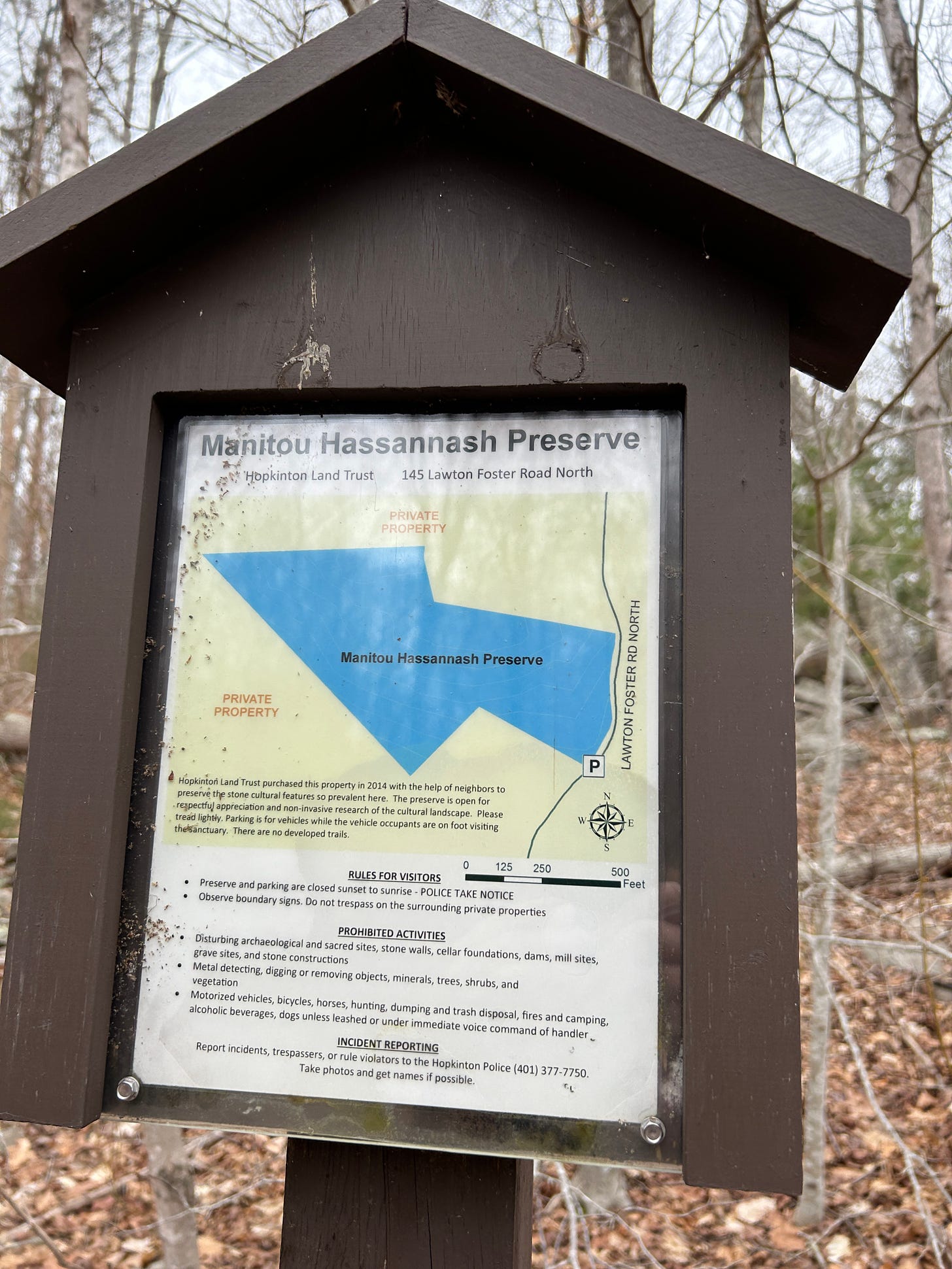Curious "Spilling" Cairn-like Stone Structures in Rhode Island
Numbers of "False-Front" or "Open-End/Closed-End" Stone Structures at Manitou Hassanash Preserve in Hopkinton
Thanks to an invitation from Researcher Harvey Buford, I saw a few intriguing stone structures down in Rhode Island in early March, and paid my first visit to Manitou Hassanash Preserve in Hopkinton, RI. To a stone site enthusiast like me, Manitou Hassanash Preserve was, in a word, Overwhelming. As Harvey and I only had about and hour-and-a-half to work with, I couldn't see it all. What I was able to see and take in I found impressive on several levels.
My first overall impression of the space is that it is indeed a remarkable and ancient Ceremonial Stone Landscape. There are over a thousand Cairn-like Stone Assemblages around the preserve.
Some dismiss these as field clearing platforms or similar farmer’s stonework. But even if there are additions from later farmers, they strike me as just that, later additions to a much older landscape, whether those additions were made by Indigenous descendants on the land or made in ignorance of what was being added to. Or both, over time.
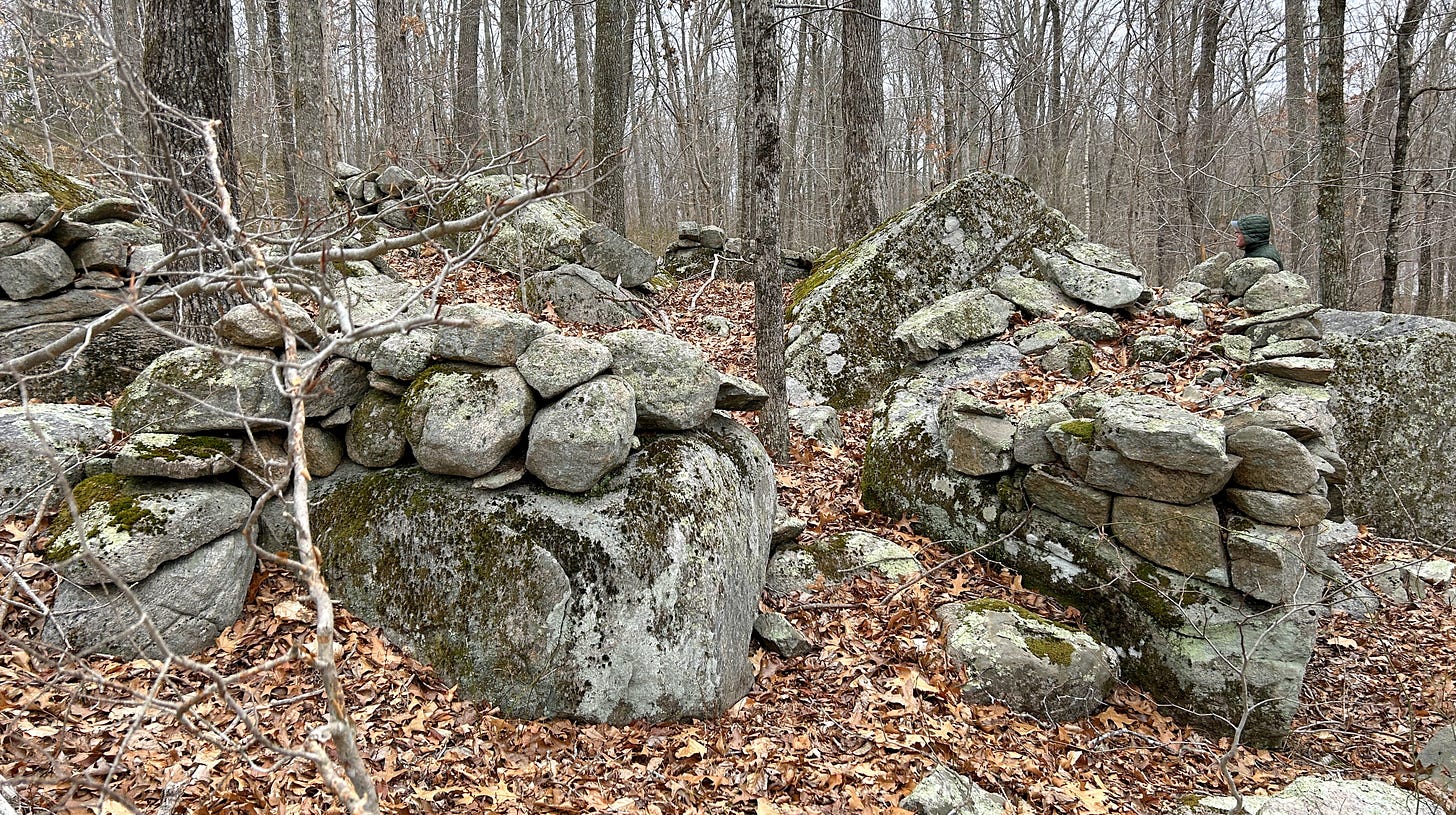
I’ve been discussing one odd type of Cairn-like Stone Assemblage I saw at the Manitou Hassanash Preserve with some other folks looking into possible Indigenous Stone Structures around the Northeast and Eastern Seaboard. To explain the design I was seeing, I made a sketch of the feature after getting back home.
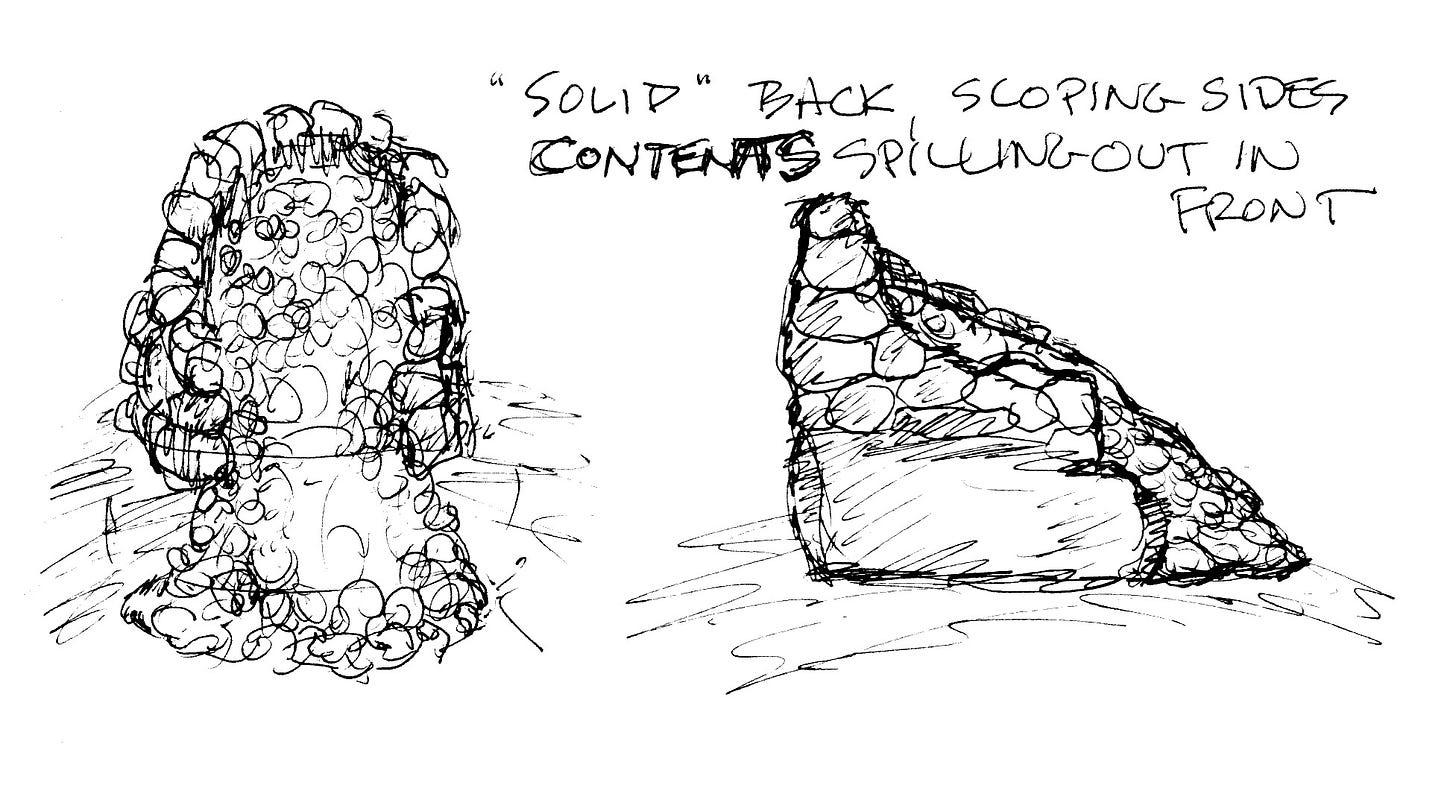
The large number of the cairn-like structures with an open side and small stone stuff sort of spilling out from them was curious. One fellow researcher had previously shared a photo of a similar construction. They'd described them as possible Egg Forms, hatched or broken. I told my guide Harvey about the report, but confessed I couldn't recall who among those I knew had shared this.
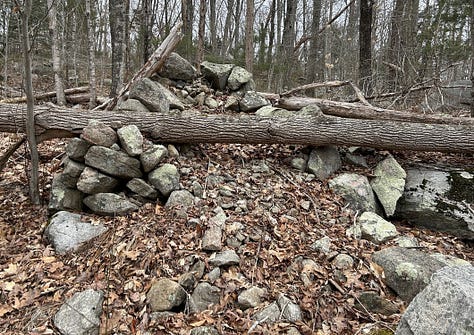
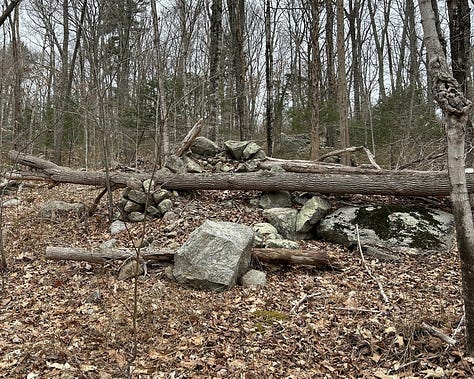
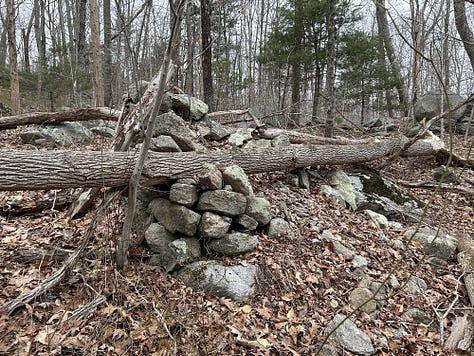
They are like an egg? But also, given the horrific massacres of innocent Indigenous in this area in the 17th century during King Philip’s War, I wondered if they could rather be a sign of respect and memorial for something more grim, like the life pouring out of a former whole?
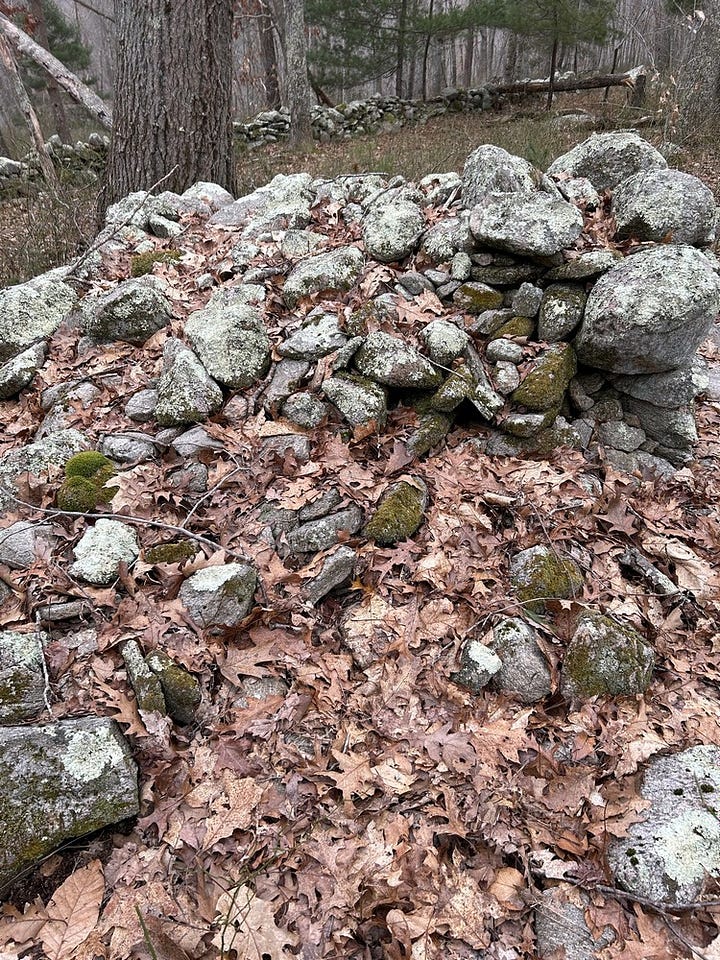
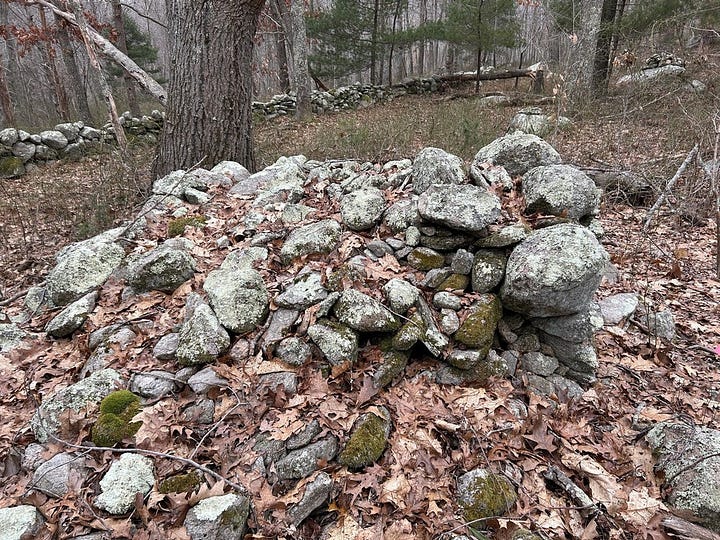
When I described these to photographer, investigator and author Markham Starr (Ceremonial Stonework, 2016) , he called them "False Front Cairns" but said he wasn't the one who had shown them to me before.
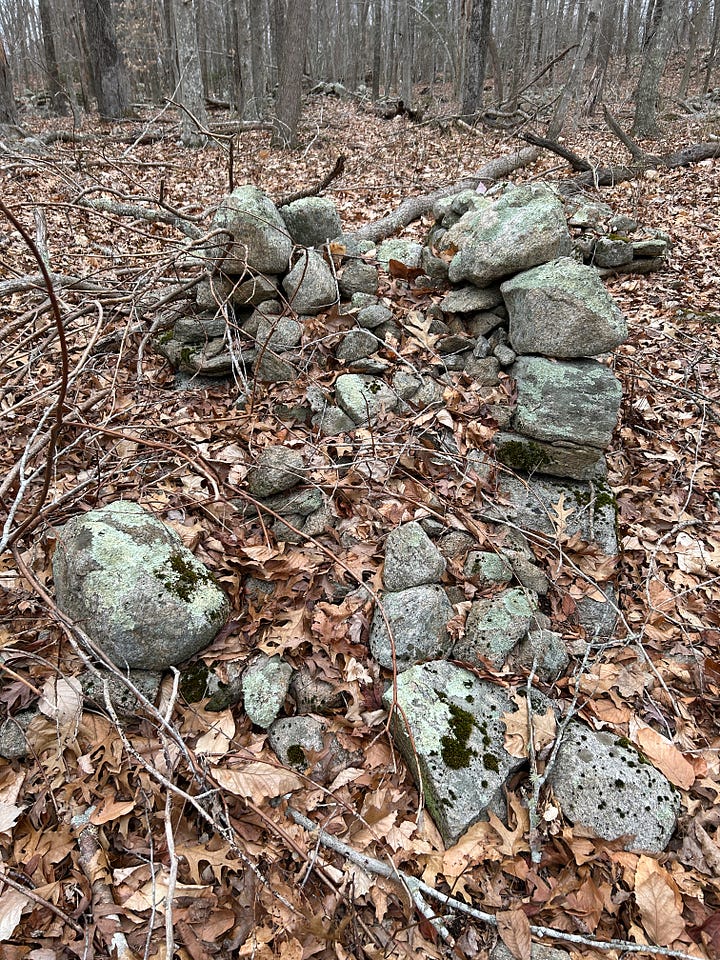
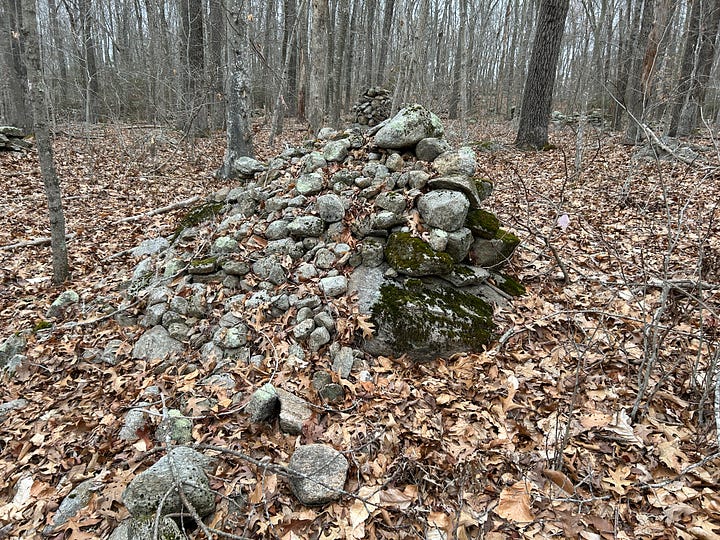
I shared my sketch with several fellow investigators, and Researcher Dan Pezzoni mentioned he'd shared photos of one of these features... on a mountain in Virginia (!) in one of his NEARA (New England Antiquities Research Association) Conference Presentations. It turned out Dan was the “Egg” Man. Coo-coo Ka-Choo…
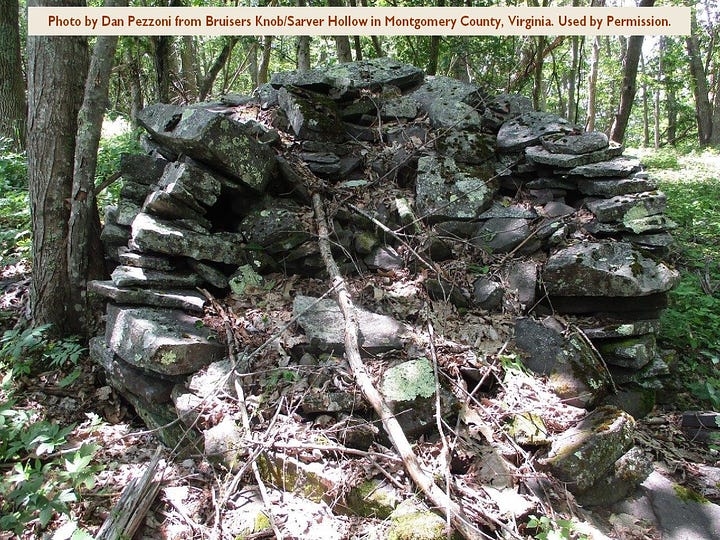
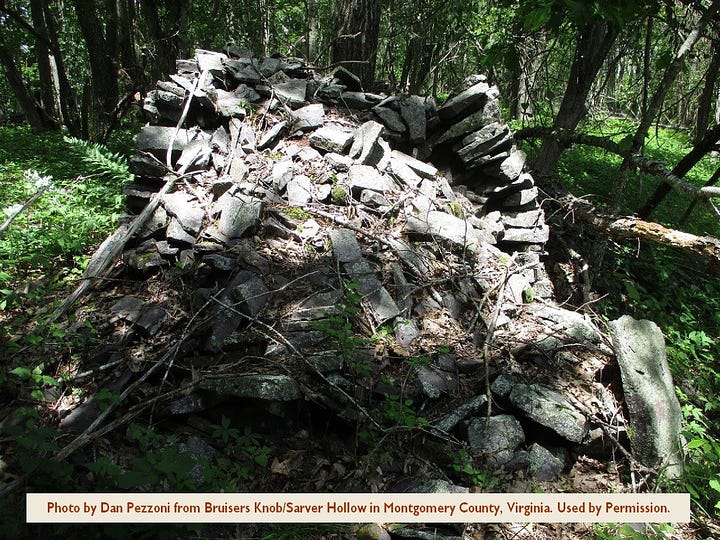
Those photos are included here courtesy of Dan. He points out that the leaning construction of the top section of each side in his example rules out damage and instead indicates deliberate construction.
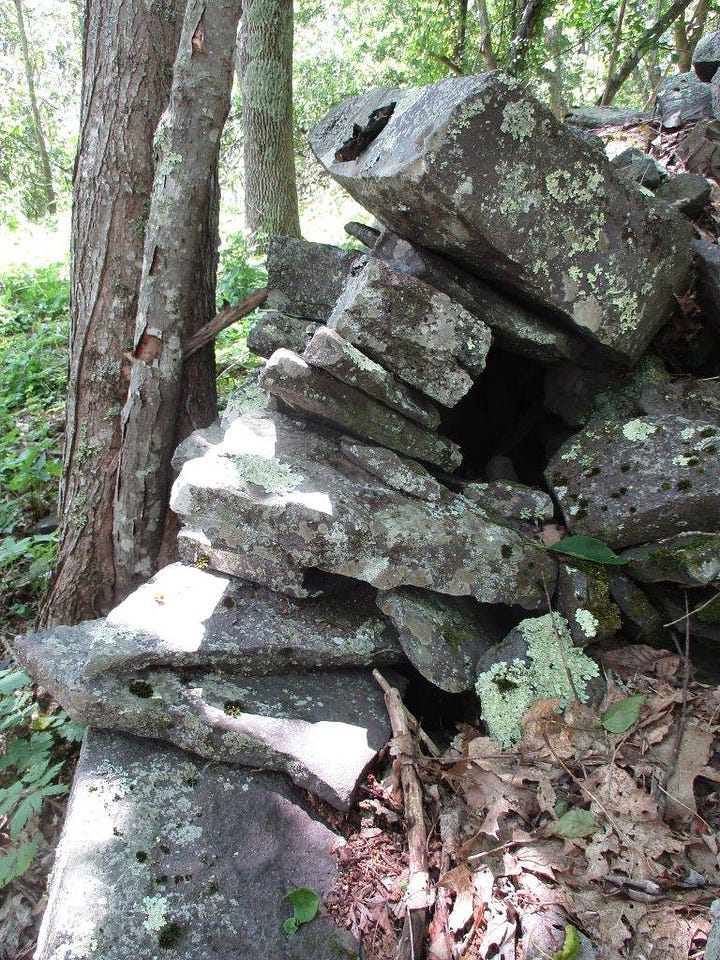
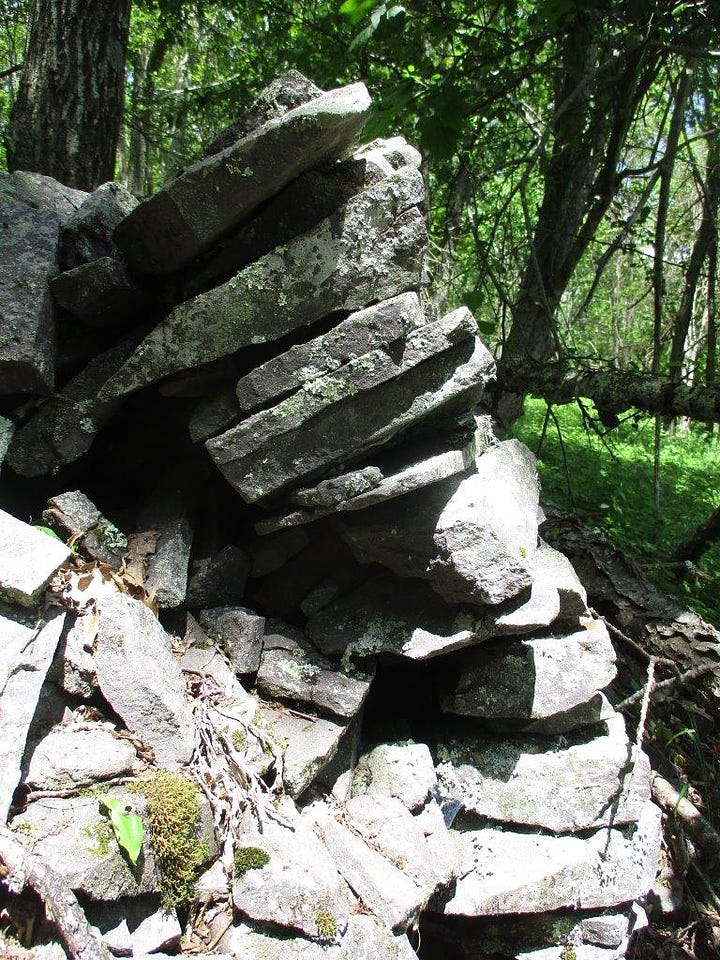
Curiously, these “Spilling” structures don't appear to be naturally damaged or to have been looted into this shape. This is not the usual appearance of structures displaying that sort of damage.
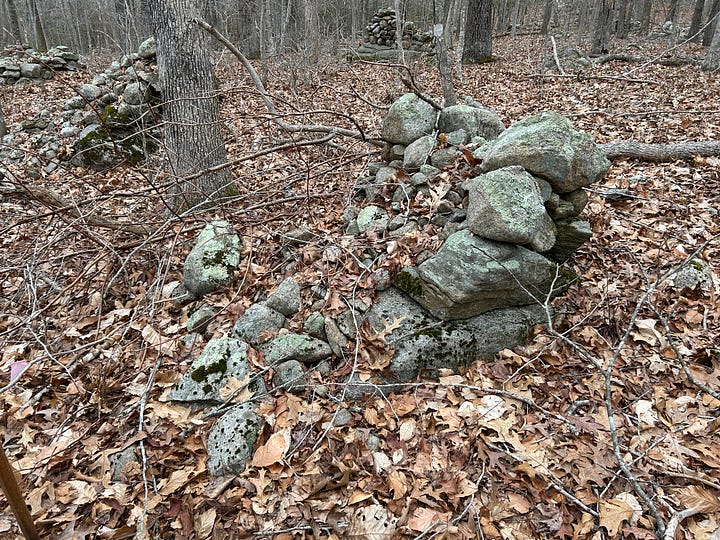
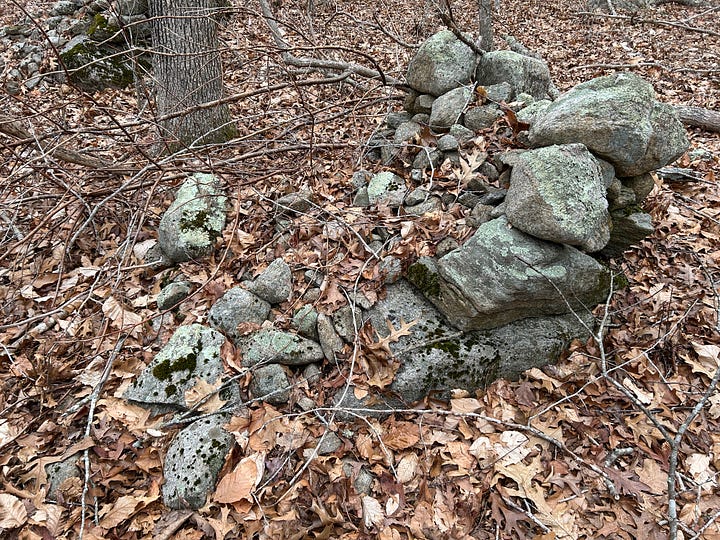
The stone fill within is made up of palm-sized and smaller stones, smaller than what would be field-cleared. Donation stones have been mentioned as a possibility, though these may not be donation piles at Manitou Hassanash Preserve due to their sheer number and placements.
It’s also quite interesting to see a similar design in Rhode Island and Virginia.
Curtiss Hoffman (Stone Prayers, 2018) pointed out that researchers James and Mary Gage had a name for these, the "Open-End/Closed-End" Design. I confess I haven't yet read James & Mary Gage's book on Manitou Hassanash Preserve, Land of 1000 Cairns. One can access some of their work on Manitou Hassanash Preserve in papers at Academia.edu.
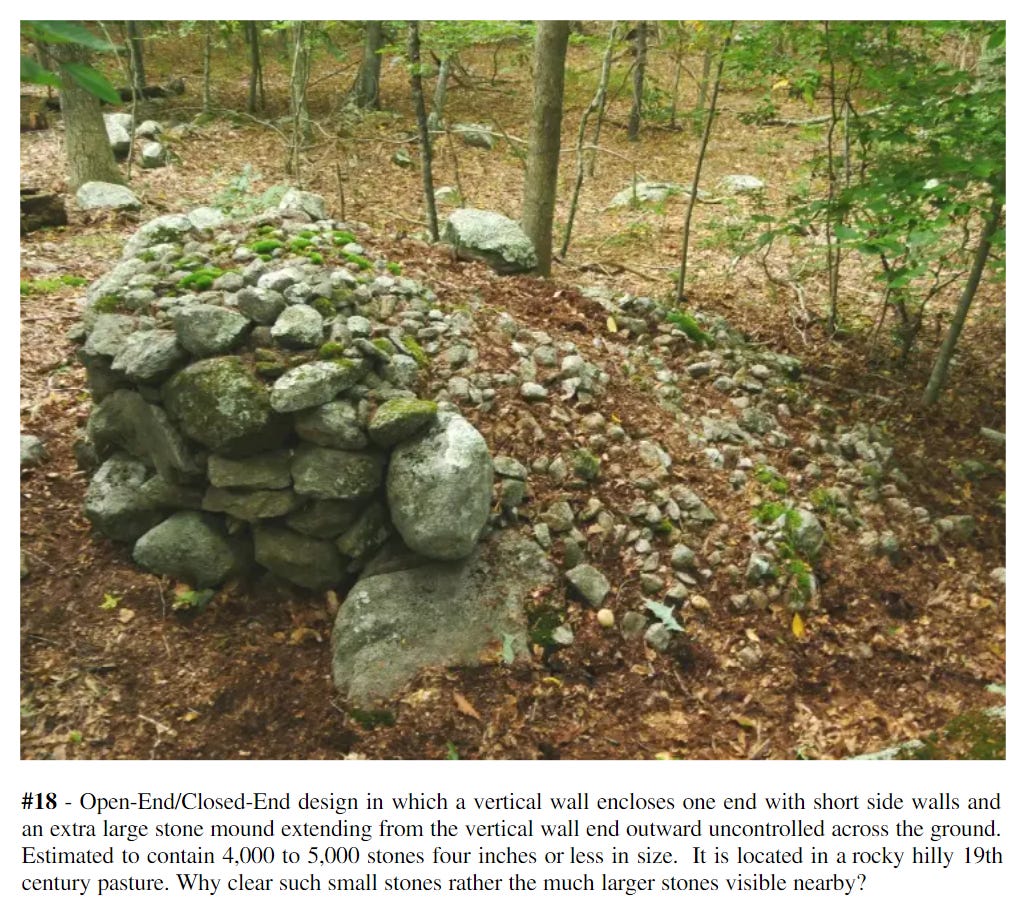
This photo and reference of theirs from Manitou Hassanash Preserve here is from their Cairns in New England Pastures (https://www.academia.edu/98337146/Cairns_in_New_England_Pastures…).
It is an interesting design to ponder.






